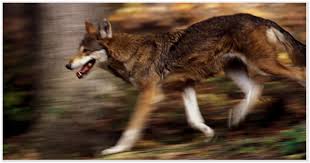
U.S. Fish & Wildlife Services Press Release Status review shows the red wolf remains endangered
PRESS RELEASE -- Work continues on future management of Eastern North Carolina experimental population
The U.S. Fish and Wildlife Service today released a five-year status review and Species Status Assessment outlining the latest science and data supporting its recommendation for no change in the red wolf’s overall status as endangered under the Endangered Species Act. The status review is required every five years and is based on the latest science and data included in a Species Status Assessment (SSA) that serves as the foundation for the recommendation.
In addition, the Service expects to release an environmental assessment and a new proposed rule by late summer with alternatives for public comment covering future management of the non-essential, experimental population (NEP) of red wolves in eastern North Carolina. An NEP is one that is considered not essential for the continued existence of the species. The Service is also beginning work with an independent organization as directed by Congress to determine within one year if the red wolf represents a taxonomically valid species designation.
The red wolf was listed as endangered in 1967 and declared extinct in the wild in 1980. In 1995, a special rule was put in place to manage a nonessential, experimental population of captive-bred red wolves in five eastern North Carolina counties.
Today’s announcement is part of a comprehensive examination of all the science, data and management experience the Service has invested in the ongoing evaluation of the overall red wolf recovery program begun more than three years ago.
Currently, there are about 40 red wolves in the wild in eastern North Carolina in the NEP and more than 200 wolves in captive breeding facilities around the United States. The red wolf NEP in North Carolina peaked at about 120-130 wolves in 2006. It has declined steadily to about 40 today, and hybridization with coyotes remains a challenge.
In September 2016, the Service announced it had completed a two-year evaluation of the entire red wolf recovery program with a peer-reviewed assessment by the Wildlife Management Institute. At that time, the Service announced several conservation actions:
Maintain a sufficient captive breeding population;
Propose, through public notice, comment and rulemaking, to reduce the NEP management area to Alligator River National Wildlife Refuge and the Dare County Bombing Range in eastern North Carolina; this will include a Section 7 consultation, National Environmental Policy Act requirements, and any other environmental compliance actions that may be needed;
Complete a [comprehensive SSA]() for the red wolf to guide the Service’s recovery planning in the future; and
Complete a five-year status review of the red wolf.


 How to resolve AdBlock issue?
How to resolve AdBlock issue? 